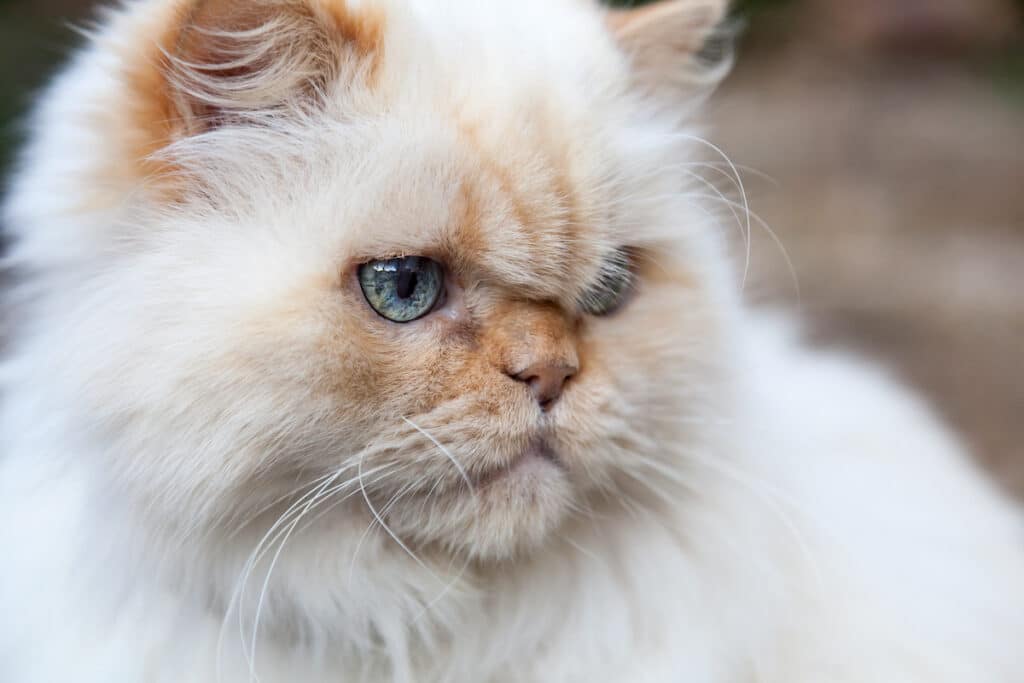When it comes to choosing a new pet, many people find cats to be a great choice. They can be affectionate and entertaining, and they don’t require as much maintenance as a dog. However, not all cats are the same, and some are better suited for more experienced pet owners. Because of this, we’ve compiled a list of some of the worst cats for first-time owners.
Keep in mind that some of the traits that made the list might actually be good for some first time owners. For example, you might not mind the high maintenance brushing of a Ragdoll or Maine Coon. Because of this, you should really take time to consider cat traits that would be both good or challenging for you.
1. Siamese
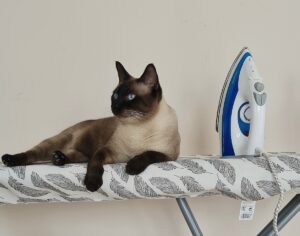
Siamese cats are known for their striking appearance and intelligence, but they can also be quite demanding. They’re very vocal and some people find their meowing to be quite loud and annoying. Siamese cats also require a lot of attention and can be quite demanding of their owners. They’re not a great choice for first-time owners who want a low-maintenance pet.
2. Persian
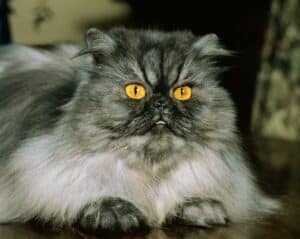
Persian cats are beautiful and popular, but they can also be a bit challenging. They’re known to be quite independent and aloof, and they don’t always respond to the same level of affection as other cats. They can also be quite stubborn, and they require a lot of grooming.
3. Savannah Cat
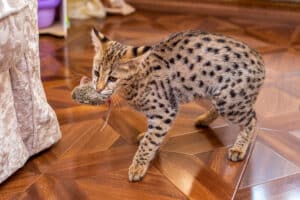
Savannah cats are a cross between a domestic and wild cat. Because of this their predatory instincts are very strong, and they’re definitely not a laid back breed. Their high energy and mischievous nature can make them very difficult to manage. Savannah cats are also a relatively large breed of cat, so they might be more inclined to pick on other cats or cause more damage.
4. Himalayan Cat

Himalayan cats are known for their flat faces, putting them at risk for brachycephalic airway syndrome. This disorder can cause severe breathing problems. In fact, any flat-faced cat breed such as an exotic can experience this issue.
Flat-faced breeds such as the Himalayan are also more prone to eye and jaw disorders. Not only that, but they have a predisposition for hip dysplasia, which is an abnormality of the hip joints causing lameness in the hind legs. This can be too much for a first time owner to handle.
5. Sphynx
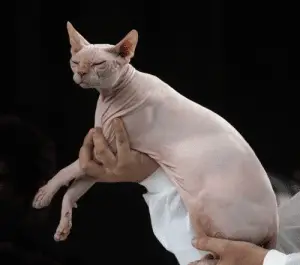
Sphynx cats are known for their unique appearance and friendly nature, but they can also be quite demanding. They’re active and require a lot of attention, and they can also be quite vocal. They also require a lot of grooming, which can be time-consuming.
6. Birman

Birman cats are known for their beautiful coloring and sweet personalities, but they can also be quite demanding. They’re quite active and require a lot of attention, and they can also be quite vocal. They also require a lot of grooming, which can be time-consuming.
7. Bengal Cats
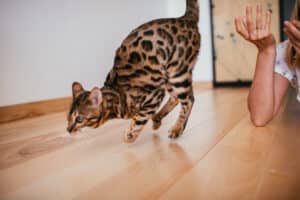
Bengal cats are known for their energetic, playful personalities. However, that can sometimes be too much for first time owners. There’s no off-switch to a Bengal cat, so you’ll have to deal their their high-energy and mischief whether you want to or not. Bengals also require more food and more attention due to their high energy.
8. Kittens
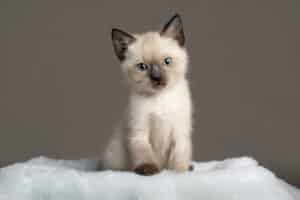
Kittens are undeniably adorable, but they are not always the best choice for first time pet owners. Kittens require a lot of time, energy, and resources to care for and can often be more work than some people expect. Kittens require frequent vet visits. Kittens need to be vaccinated, spayed/neutered, and tested for various diseases.
Kittens can be destructive. Kittens have a lot of energy and can be destructive in their attempts to explore their environment. This means that first time owners need to be prepared to buy and replace furniture, curtains, and other items that may be destroyed by their kitten. Not only that, but kittens can be difficult to litter train.
9. Senior Cats
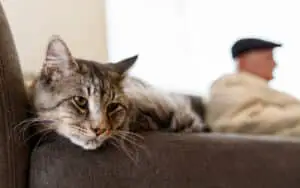
When it comes to cats, senior cats can be difficult to care for and may not be the best choice for first-time owners. Here are a few reasons why senior cats are bad for first time owners. Senior cats are more prone to health problems such as kidney disease, arthritis, and diabetes. These health issues require more frequent vet visits and can be costly to treat. This can be overwhelming for first-time owners who may not be prepared for the financial responsibility of caring for a senior cat.
Senior cats may not have the same energy level as younger cats, and may not be as interested in playing or interacting with people. They also may require more care and attention. Senior cats may need more help with day-to-day tasks such as litter box cleaning, grooming, and feeding.
10. Fearful Cats
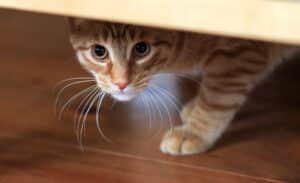
Fearful cats can be a great addition to any home, but they aren’t the best choice for first time owners. While they can be loving and loyal companions, they can also be difficult to handle due to their fear and anxiety. Fearful cats can be unpredictable and may lash out with sudden aggression, which can be very dangerous for inexperienced owners.
Fearful cats are often more sensitive to their environment, and any changes to the home, people, or even other pets can be very stressful for them. This can make them more prone to anxiety, which can manifest as aggression or fear-based behaviors. Inexperienced owners may not understand these reactions, which can lead to an unsafe and uncomfortable home environment.
11. Special Needs Cats
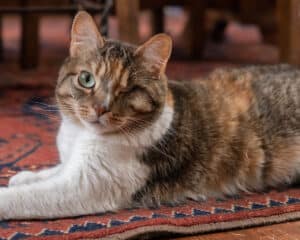
If you’re a first time cat owner, you might be tempted to adopt a special needs cat. After all, they are incredibly sweet, loving animals that deserve a loving home. Unfortunately, special needs cats can prove to be too much of a challenge for first time owners. Special needs cats often require extra care and attention, on top of the regular care that cats need. This includes taking them to the vet more frequently, managing medications, and providing special diets.
Taking care of a special needs cat can be costly. Veterinary bills, medications, and specialized diets can add up quickly, and first time cat owners may not be able to afford the expenses associated with special needs cats.
Caring for a special needs cat can be emotionally draining. Special needs cats require more attention and care than other cats, and it can be difficult to watch them suffer from their health problems. First time cat owners may not be prepared to handle the emotional stress that comes with caring for a special needs cat.
Conclusion: Worst Cats for First Time Owners
When choosing a cat, it’s important to consider the breed and the level of maintenance it requires. Some cats, like Siamese, Persian, Ragdoll, Maine Coon, Sphynx, Birman and Bengal cats, are some of the worst cats for first time owners. It’s best to research the breed and find one that is better suited for your lifestyle.
Kittens, senior cats, fearful cats and special needs cats are also some of the worst cats for first time owners. Owners may not yet be prepared for the time, energy and financial costs of owning these cats.
As a final note, consider adopting vs. buying a cat. There are plenty of loving, low maintenance cats at shelters in need of a loving home. Chances are, you can find your special furry friend at your local shelter.
FAQs
The most difficult cat to own would be either a Bengal cat or a Sphynx cat. Bengal cats are actually a mix between domestic and wild cats. Because of this, they can have really high energy and be very mischievous. However, they’re also very adventurous and some owners can take them on walks or hikes.
Sphynx cats are very friendly and affectionate, but very high maintenance. Because they don’t have hair they can get sunburned easily. Natural oils can build up on their skin and leave stains on furniture. Sphynx cats are the only cat breed that must be bathed regularly.
Persian: While they are beautiful cats, Persians aren’t known for being particularly friendly. Many have a very independent nature, and they can be quite aloof and standoffish.
Bengal: Bengal cats are known for being energetic and active, but they can also be quite aggressive. They don’t usually bond well with strangers and can be hostile if they feel threatened.
Russian Blue: Russian Blues are known for being very loyal and devoted to their owners, but they can also be quite shy and wary of strangers. They may not be the most social cats, and they may not be the best choice if you’re looking for a friendly cat.
The truth is, it’s hard to say which cat breed is the naughtiest since all cats have their own personalities and behaviors. However, there are a few breeds that tend to be more active, mischievous and outgoing than others. These breeds are often referred to as the naughtiest cats.
Siamese cats are often considered to be one of the naughtiest breeds. They are known for their intelligence and their love of attention and play. Siamese cats are also very vocal, and they love to explore new places and objects. They are prone to getting into mischief, but they also make great companions.
The Maine Coon is another breed of cat that is often considered to be naughty. Maine Coons are known for their intelligence and their friendly, outgoing personalities. They are very active and love to explore new places and objects. Maine Coons are also very vocal and love to play with their owners.
Finally, the Bengal cat is often thought of as the naughtiest cat breed. Bengals are known for their intelligence and their love of playing. They are also very active and love to explore new places and objects. Bengals are very vocal and love to be around their owners.
Savannah cats are similar to Bengal cats in that they are a cross between a wild cat and domestic cat. Because of this, they’re usually very naughty cats.
The Ragdoll is one of the most popular cats for first-time owners. These cats are well known for their laid-back and affectionate personalities. They tend to be very gentle and loving, and they usually don’t mind being picked up and cuddled. They also tend to be quite low maintenance, as they are content to lounge around the house all day.
The Maine Coon is another great choice for first-time cat owners. These cats are known for their intelligence and gentle nature. They are usually quite laid-back and tolerant, making them a great choice for those who want a low-maintenance cat. They also tend to be quite playful and love to explore, so they are a great choice for those who enjoy spending time with their cat.
When it comes to cats, there is one breed that stands out among the rest for being particularly lazy — the Ragdoll cat. This breed of cat is known for its calm, docile nature and its tendency to sleep for long periods of time. Ragdolls are often described as the “ultimate lazy cats,” and it’s easy to see why.
Ragdolls have a laid-back nature. They are generally very friendly cats who love to be petted, but they don’t like to be over-stimulated. They are relatively easy-going, but they do need exercise and mental stimulation. However, they don’t usually require as much as other breeds, making them ideal for busy households.
Ragdolls also tend to sleep for long periods of time. This is not surprising, considering their laid-back nature. They can sleep up to 16 hours a day, which is much more than the average cat.
1. Senior Cats: Senior cats can often be overlooked because of their age, but they can make great pets. Unfortunately, many potential adopters are more interested in kittens, leaving senior cats with little chance of being adopted.
2. Special Needs Cats: Special needs cats can require extra care and attention, which can make them less desirable to potential adopters. Cats with disabilities such as blindness, deafness, or even a chronic illness can be difficult to care for and may be overlooked by many people.
3. Fearful Cats: Fearful cats can often be difficult to socialize and may be unadoptable due to their skittish behavior. These cats are often shut down in a shelter environment and may never come out of their shell enough to be adopted.
4. Long-Haired Cats: Long-haired cats can be beautiful, but they require more grooming than short-haired cats. Many potential adopters may not have the time or patience to take care of a long-haired cat, making them less desirable.
5. Black Cats: Black cats have a long-standing reputation of being unlucky, so many people may be hesitant to adopt one. Even though they are just as loving and loyal as any other color of cat, they may be overlooked by potential adopters.
One of the calmest types of cats is the Ragdoll. This breed is known for its friendly, gentle demeanor, and its love of snuggling. Ragdolls are usually very laid-back, and don’t require a lot of attention or activity. They’re also quite affectionate, and will often follow their owners around the house.
Another breed that is known for its calm nature is the British Shorthair. This breed is known for its relaxed, even-tempered personality, and its independence. British Shorthairs are very loyal to their owners, but they are also content to spend time alone.
The Persian is another breed that is known for its peaceful nature. Persians are generally very loving and gentle, and they tend to be quite docile. They don’t require a lot of activity, and are often content to nap in a sunny spot.
When it comes to cats, there is a great deal of variability in terms of playfulness. Some cats are natural born athletes, while others are more content to just sit and watch the world go by. There is no one breed or type of cat that is necessarily less playful than another – it just depends on the individual cat.
That said, some cats tend to be less playful than others due to their personality. Generally, cats that are more laid back, independent, and reserved tend to enjoy interactive play less than cats with more outgoing, social personalities. If you’re looking for a cat that won’t be demanding your attention all day, then consider breeds like the British Shorthair, the Ragdoll, or the Persian. These cats tend to prefer to curl up and relax than to run around and play.
In addition to breed, age can also affect a cat’s playfulness. Kittens tend to have more energy and be more playful than adult cats, who can become more sedentary as they age.

